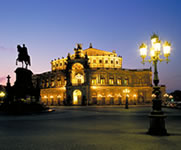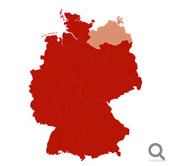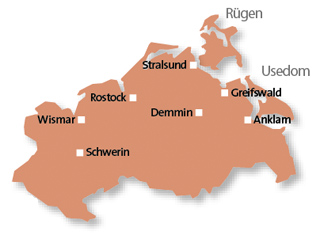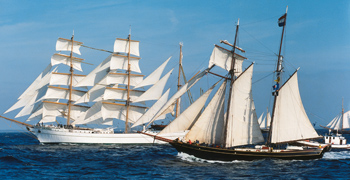
Historical Towns
- Historical towns in Brandenburg
- Cathedral Towns and Cities in Saxony-Anhalt
- The innovative Anhalt-Wittenberg Region
- Enchanting towns in the Harz
- The beautiful towns and cities in Saxony
- Towns and cities of culture in Thuringia
- Beautiful towns of Franconia
- East Bavarian traditional towns
- Alpine towns in the Allg�u
- The eastern Akpine Foothills and their towns
- Towns and villages in the western foothills of the Alps
- Mediterranean towns on Lake Constance
- Towns in the Swabian Alb
- Unspoilt towns in the Black Forest
- Towns for refined tastes in the Heilbronner Land
- Towns in the Odenwald
- Wine towns in Rheinhessen
- Saarland, a region of contrasts
- Romantic towns in the Hunsr�ck and Nahe Regions
- Idyllic towns and villages in the Moselle Region
- The Ahr Rhine Eifel holiday region
- Wine towns on the Romantic Rhine
- Modern towns and cities in the Bergisches Land Region
- The Lahn Valley and its fairytale towns
- Historical towns in Kurhessisches Bergland
- Sauerland's scenic towns
- Fairytale towns in the Weserbergland Hills
- Majestic towns in the M�nsterland Region
- The nine stars of Lower Saxony
- North and East Frisian Islands
- Vibrant Schleswig-Holstein
- Maritime towns along Mecklenburg's Baltic Coast
- Historical Hanseatic Towns
- Germany's Baltic Sea Islands
- The Mecklenburg Lakes
Contact and information
Along Germany's exhilarating Baltic coast on the trail of Caspar David Friedrich

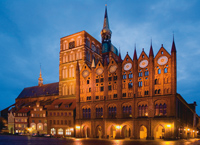
Stralsund
Stralsund is renowned for its magnificent gabled houses, impressive churches, medieval abbeys and town hall. The full ensemble of historical streets and buildings at the heart of the town is inscribed on the UNESCO World Heritage list. It is particularly worth exploring the harbour with its historical warehouses and canals. Stralsund incorporates the natural world in all kinds of ways. Among its top visitor attractions are the Ozeaneum aquarium and the German Oceanographic Museum, which attract visitors in their droves. The giant aquariums give a fascinating impression of life at the bottom of the ocean nowhere will you find marine habitats so authentically recreated than in the Ozeaneum. Its largest tank holds a staggering 2,600 cubic metres of sea water.Anklam
Across the water from the island of Usedom is Anklam. The skyline of this enchanting town is dominated by historical buildings. Strolling through the streets is a real delight with all the characteristic brick-built churches and gabled houses. The town wall, the fortifications and the medieval fountain all merit a visit. Anklam has earned a place in the aviation history books thanks to one of its most famous residents Otto Lilienthal, whose first attempts at flying were made in the town.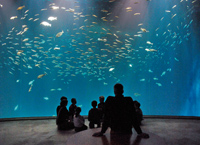
Greifswald
The university town of Greifswald boasts many attractions from the ruins of Eldena Abbey to Wiecker Bridge. This wooden bascule bridge from 1887 is one of the oldest in Europe and remains in full working order. The mechanism for raising the two halves of the bridge for passing boats is still set in motion by hand, and the whole structure is now protected by a preservation order. Eldena Abbey was founded by Cistercian monks at the end of the 12th century. It holds an important place in art history thanks to Caspar David Friedrich, who chose it as the subject of one of his paintings. A prominent artist of early German Romanticism and one of Greifswald's most famous sons, Friedrich made no secret of his affinity for his country's Baltic coast. Meadows near Greifswald and Chalk Cliffs on Rügen are among his best-loved works.Demmin
Demmin lies in the unspoilt Mecklenburg Switzerland region. Although not a seaport, it played an important role within the Hanseatic League. Demmin holds great appeal for nature lovers: the Peene valley is home to Germany's largest unbroken area of fens, a habitat for many rare species of plants and animals. The River Peene is also known as the Amazon of the north because of its untamed natural scenery. Highlights in Demmin's events calendar include organ and choral concerts in the Gothic church of St. Bartholomew, the annual Peene festival, concerts by the local music school and performances at the open-air theatre.Wismar
Wismar has preserved the character of a fully fledged Hanseatic town during the heyday of the trading alliance in the 14th century. The medieval layout of the town remains largely intact to this day and the old quarter has been designated a UNESCO World Heritage site in recognition of its great cultural significance. Wismar's historical brick-built buildings are a legacy of the political prominence and prosperity it enjoyed in the Middle Ages. The monumental brick churches display almost all the elements of Hanseatic religious architecture in the southern Baltic region. Even the more functional historical buildings give an impression of the town's former wealth. The local history museum in the Schabbelhaus is a mine of information on the town.A fish with a noble name
The Hanseatic towns are famous for boned, marinated Bismarck herring, which owes its name to an astute fishmonger named Johann Wichmann. He secured this prestigious label by sending a barrel of his herring to Chancellor Otto von Bismarck for his birthday. The gift found such favour with Bismarck that the fishmonger was able to use the name from that day on. Nowadays Bismarck herring is shipped all over the world from Germany's Baltic coast. Traditional Pommeranian cuisine also caters well for meat lovers with regional delicacies such as spanferkel (suckling pig) and stuffed ribs, which can be washed down with a Störtebeker pilsner, brewed in Stralsund.Travel Planner
Select an option...
Romance and charm
Warnemünde is especially romantic in the evening: a walk along the Alter Strom waterfront features restored captains' cottages and summer villas, freshly caught fish straight from the cutter, cosy restaurants and a crimson sunset over the sea.
Food and drink
No visit to Greifswald is complete without sampling one of the creative fish dishes at the Hornfischbar. Soak up the maritime atmosphere on board this 100-year-old tugboat, which has been lovingly converted into a popular floating restaurant.
History and tradition
Every year Stralsund's Wallenstein fair and the Sweden festival in Wismar celebrate nearly 170 years of Swedish rule in northern Germany and in the Hanseatic towns. These traditional events feature processions, Scandinavian music and craft markets.
Nature and scenery
Katzow Sculpture Park between Greifswald and Wolgast is a fine attraction displaying giant works of art in 18 hectares of meadowland. The towering sculptures, some more abstract than others, provide a striking contrast to the tranquil countryside.




